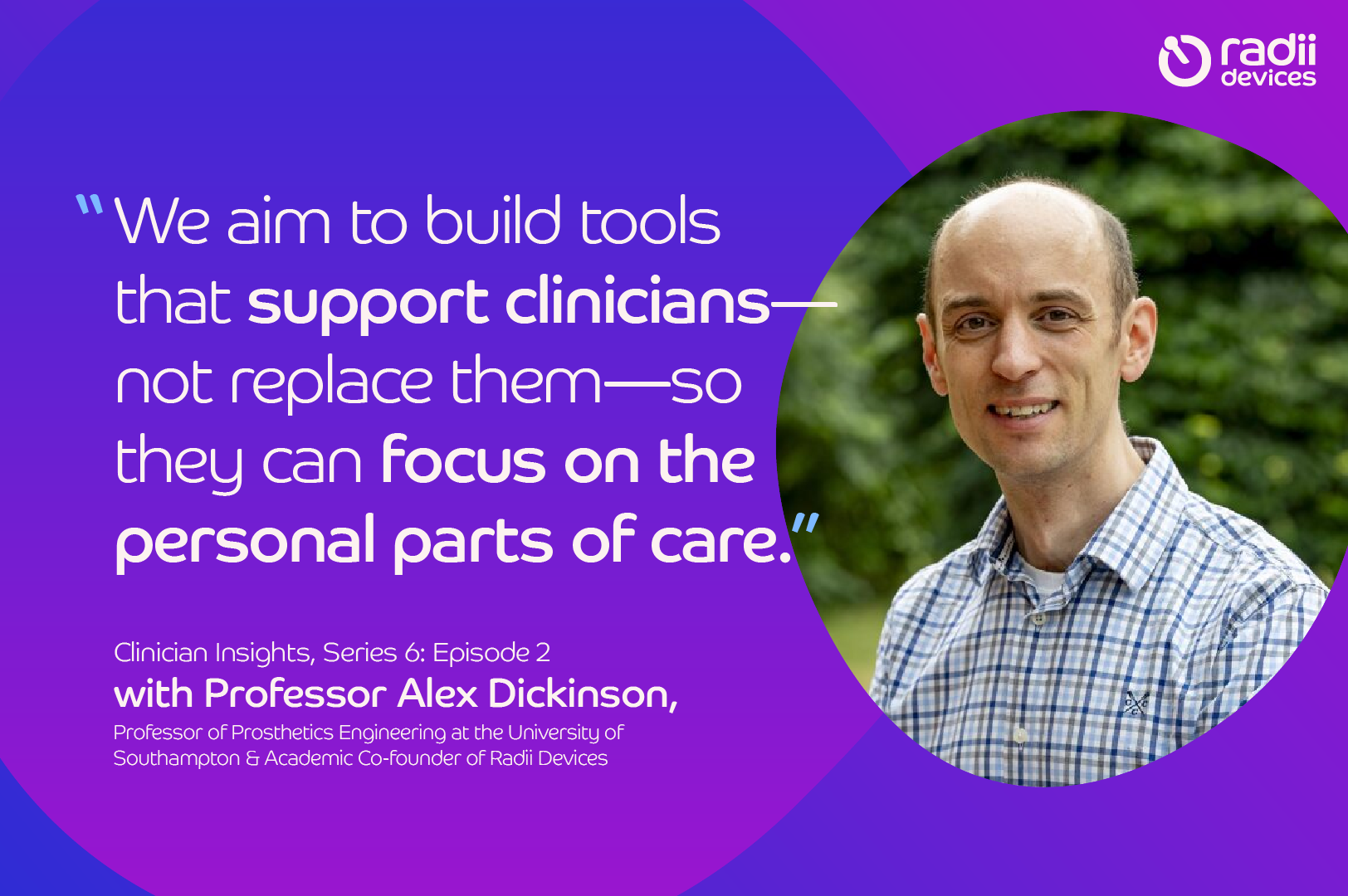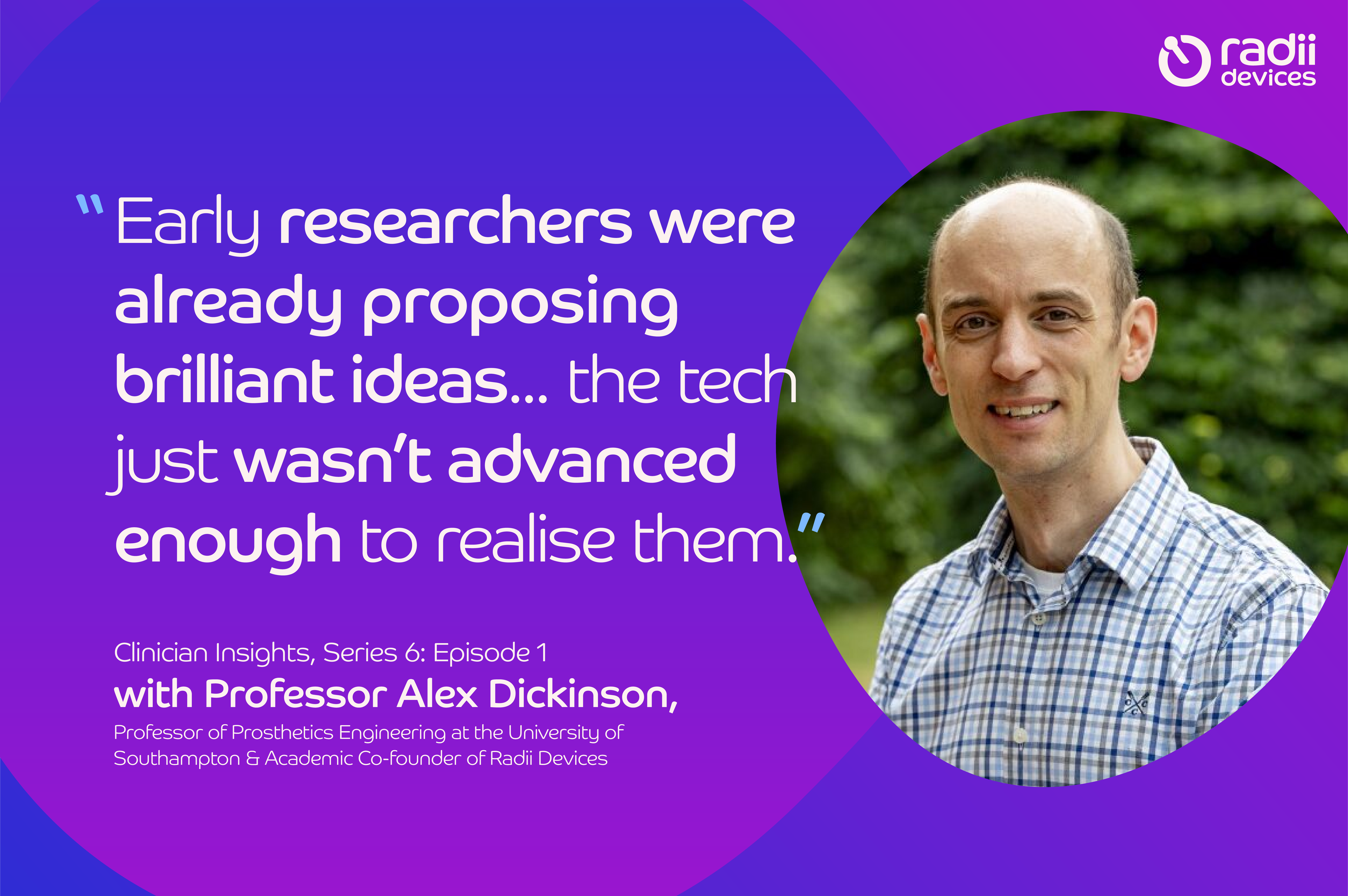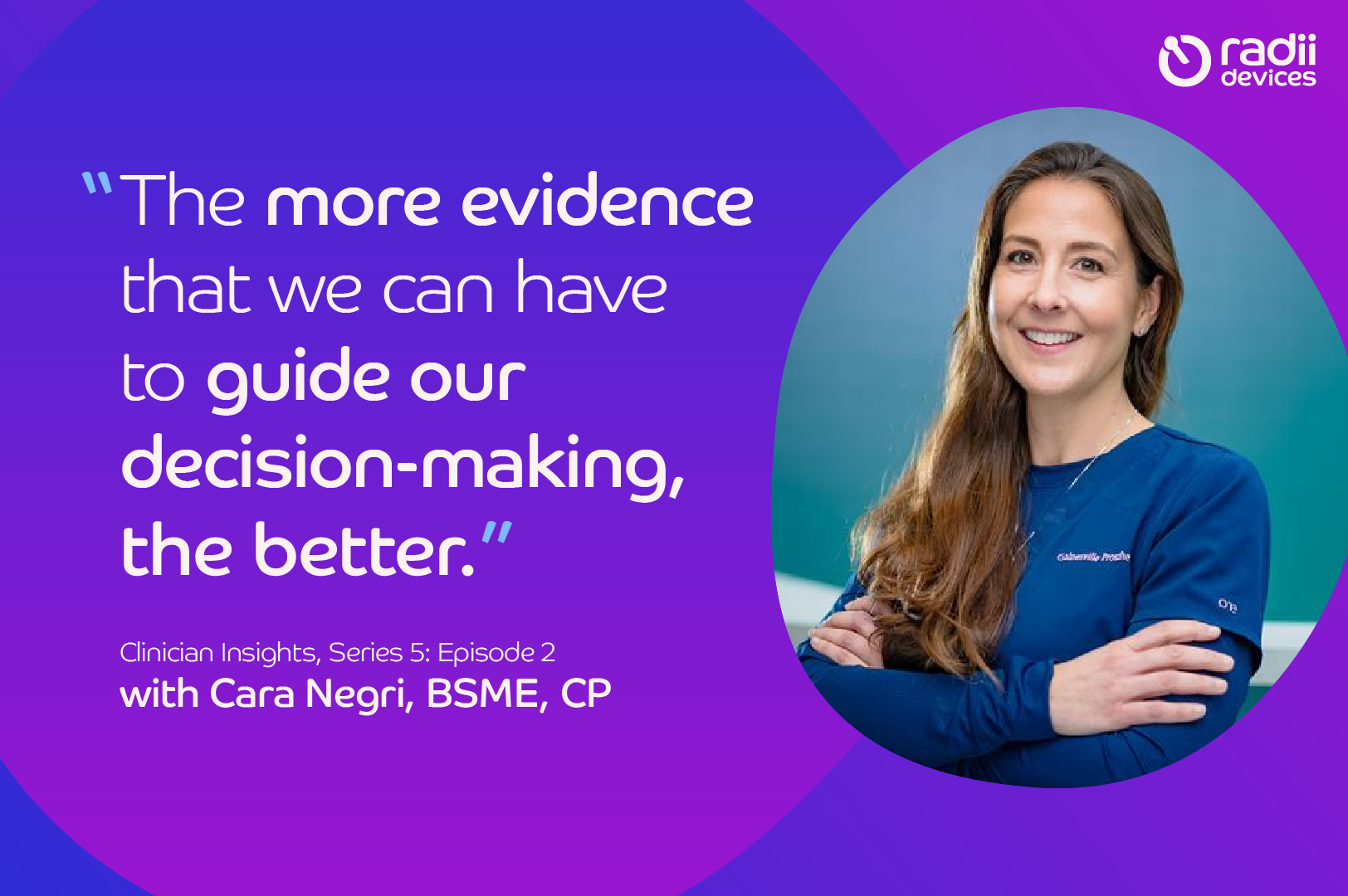
Clinician Insights: Series 6, Episode 2
Welcome back to Clinician Insights for the second episode in our conversation with Professor Alex Dickinson, Professor of Prosthetics Engineering at the University of Southampton and academic co-founder of Radii Devices.
In Episode One, Alex discussed the origins of his research in prosthetics and the academic collaborations that helped shape his work in the potential of technology in orthotics and prosthetics. If you haven’t read that episode yet, we’d recommend starting there.
Today, we’re diving deeper into the evolving relationship between academia and clinical practice—exploring what it really takes to translate engineering research into something practicable in a prosthetics clinic. From the reality of global research partnerships to the challenges of software innovation, we’ll also look ahead to what Alex believes the future holds for prosthetic design.
As always, Clinician Insights is brought to you by Radii Devices—spotlighting how digital technology can support and enhance clinical care.
Now, let’s pick up our conversation with Alex.
Emilie: In our last episode, you mentioned there were moments when people weren’t quite as excited about your early ideas as you expected. Was that reaction coming mostly from clinicians—the people you’d imagined using your work? How have you seen the influence of research on clinical adoption evolve since then?
Alex: Yes, definitely. I think, early on, we had some initial ideas that I believed could deliver clinical and patient benefit. We shared them with a few people—but the feedback was “Unless we can see a really clear and immediate pathway to patient benefit, you’ll need to do more work.” At the time, I think we assumed things like scan-based limb shape classification were obviously valuable. But we hadn’t quite grasped how direct the benefit of such data insight technologies would need to be for a clinician, to actually translate into better care in the clinic.
Emilie: Right—it’s one thing to have the idea and another to show exactly how it helps in practice.
Alex: Exactly. If you’re designing a new prosthetic component, the pathway is quite linear: you develop a prototype, test it, refine it, and then progress through clinical assessment towards regulatory approval. Back in 2015, that felt like a more straightforward translation from academic research to clinical use than our ideas around data analysis. Over time, I think the whole community, especially the engineering side, has become more familiar with how the innovation pathway for software should work, and regulatory frameworks have also improved.
However, things get confusing where ideas are published in scientific journals and they look impressive, but in reality, they are still a long way from something that can be applied in clinical practice. There are a lot of examples in the literature—especially around earlier experiments with 3D printing, and simulation-based socket design —that researchers, students and potentially patients can access, download and read. But just because it is in scientific literature, it does not mean it is being applied to practice just yet.
Emilie: Yes, that’s such an important point.
Alex: I think academics have evolved our own approach in response to that. We still publish what you’d call “foundational” research—not quite blue-sky, but fundamental work that could lead to future clinical applications. We’re always careful now to clearly communicate what still needs to happen before any of it can impact patient care. That’s a key part of how we write up and present our work now.
Emilie: And, in your view, what does still need to happen? Is it more research? Better testing? Or is it more about collaboration with clinicians?
Alex: Yes, it’s a combination. One example is a paper we published mid last year - available here - looking at insights from large sets of historical socket design records. We were lucky to be given access to these through Opcare in the UK, and we analysed them in partnership between Radii and the University of Southampton.
The idea was: could you use previous socket designs to make helpful suggestions to clinicians when they’re starting a new design? Not as a finished answer, but as a smart starting point—one that could reduce repetitive work and let the prosthetists spend more of their time on higher value-added tasks.
We used what’s known as the Pareto principle: using this data analysis, you present design suggestions to get immediately to a point that currently might take up 80% of the prosthetists’ time, but only reflects the basic 20% of their experience and skill. That frees them up to spend most, if not all their time where it really matters—on the complex, nuanced parts of care that rely on their experience and patient relationships.
Emilie: Exactly – they’re the expert in the room.
Alex: Right. That’s something we’re always careful to say. As an engineer, I haven’t trained as a prosthetist. It would be wrong for me to claim I could design a socket without that background.
What I can do is develop software tools that help clinicians make the most of their time and expertise, especially in that patient-facing time. The exciting aspect now is designing interfaces that truly fit the way clinicians think, not just the way software engineers or CAD specialists do. Building software that works well in a clinical context—that’s intuitive, useful, and respectful of clinical judgment—that’s not trivial. It’s a huge part of where innovation in prosthetics is heading.
Emilie: Thank you so much for your insights, Alex.
That brings us to the end of our conversation with Professor Alex Dickinson. If you’re a clinician wondering how academic research can support your practice, or curious about what the next decade of innovation in prosthetics might look like, Alex’s perspective offers a vital bridge between academia and the clinic.
Thank you for reading Clinician Insights, brought to you by Radii Devices.

